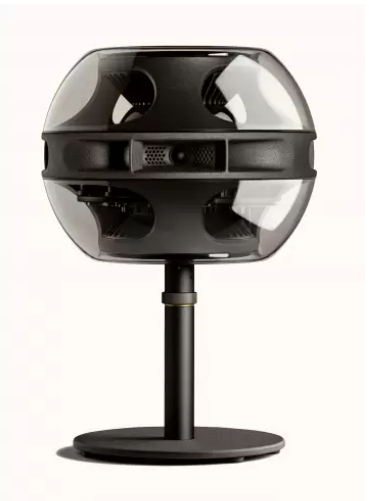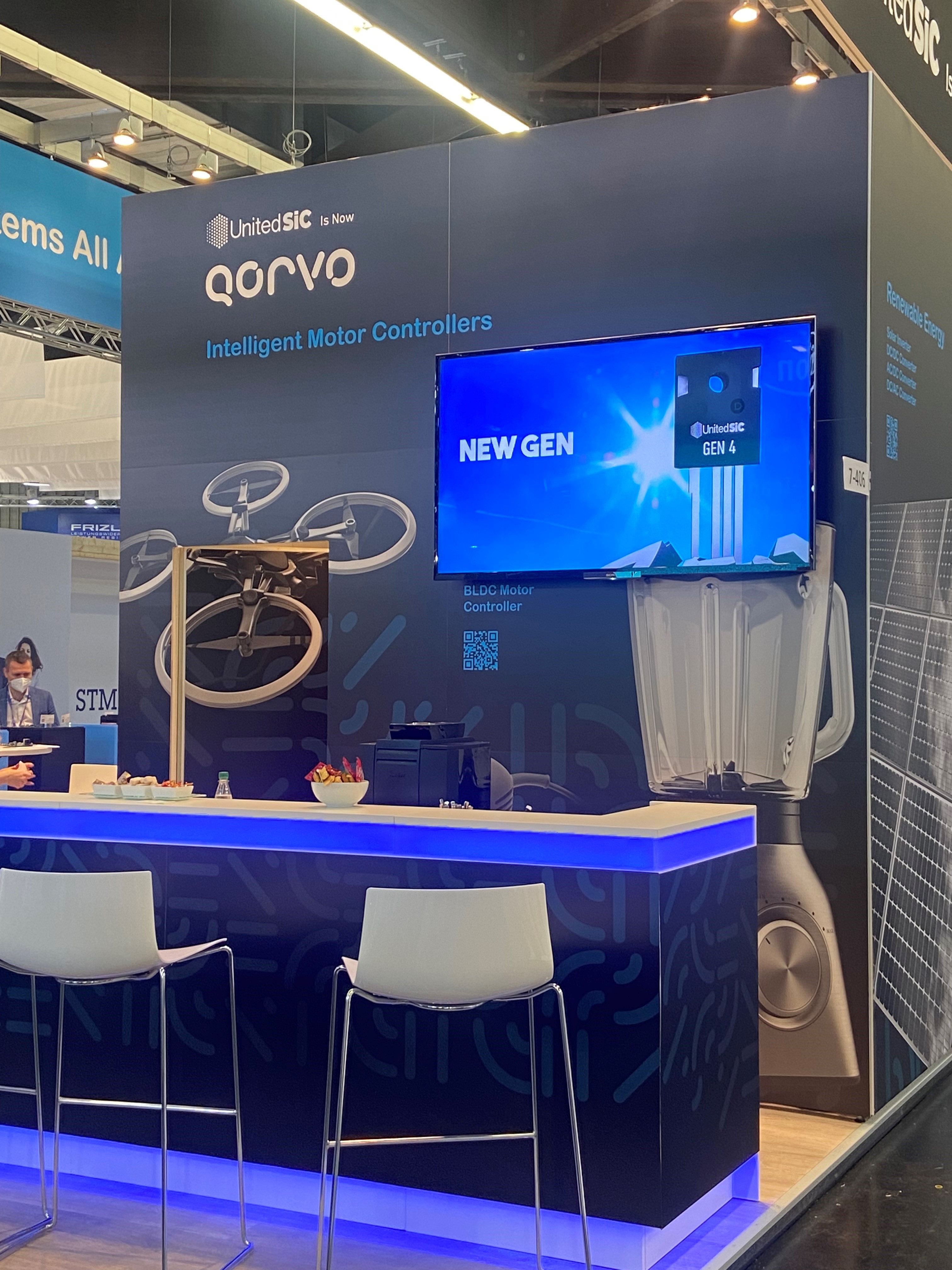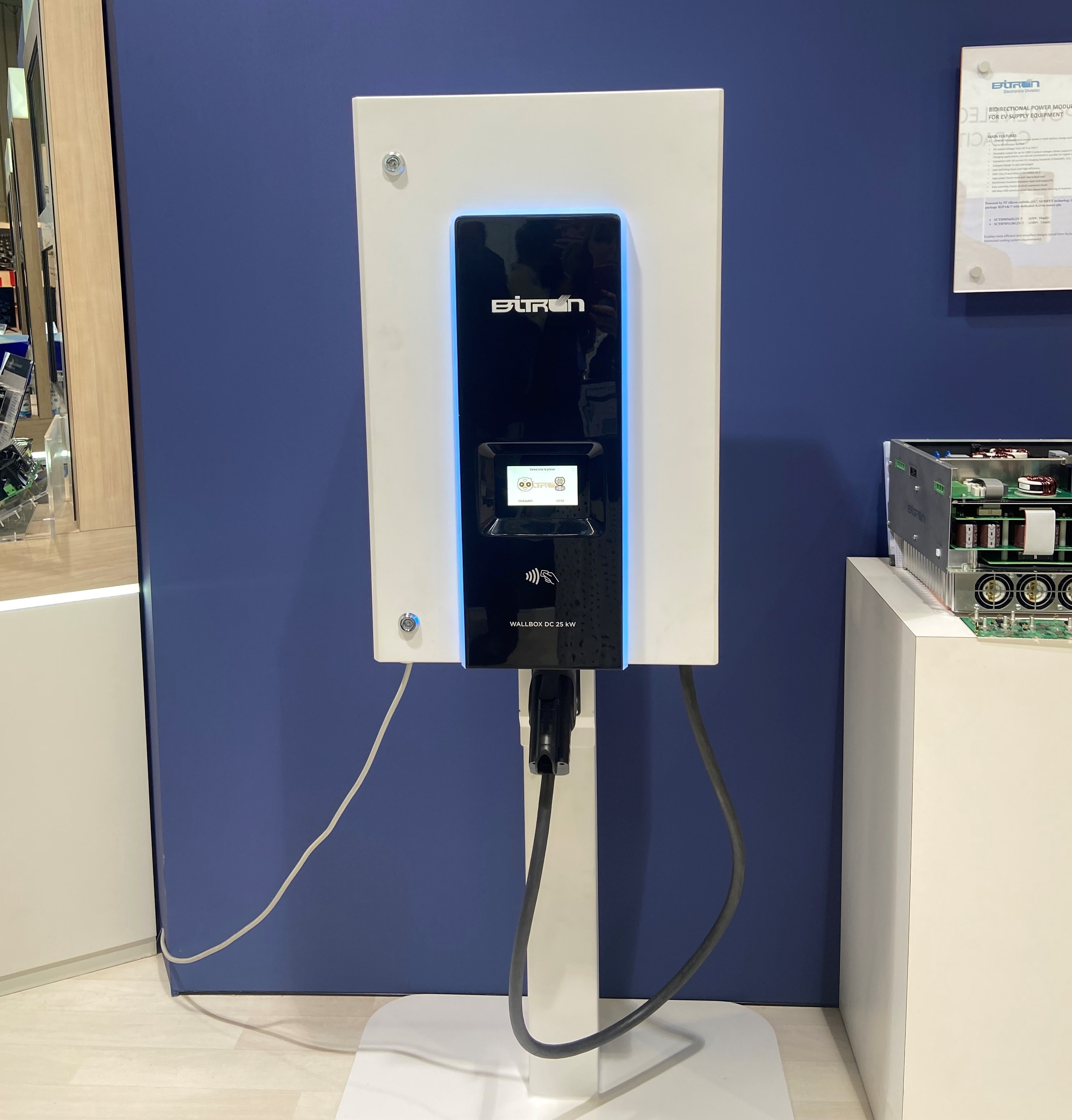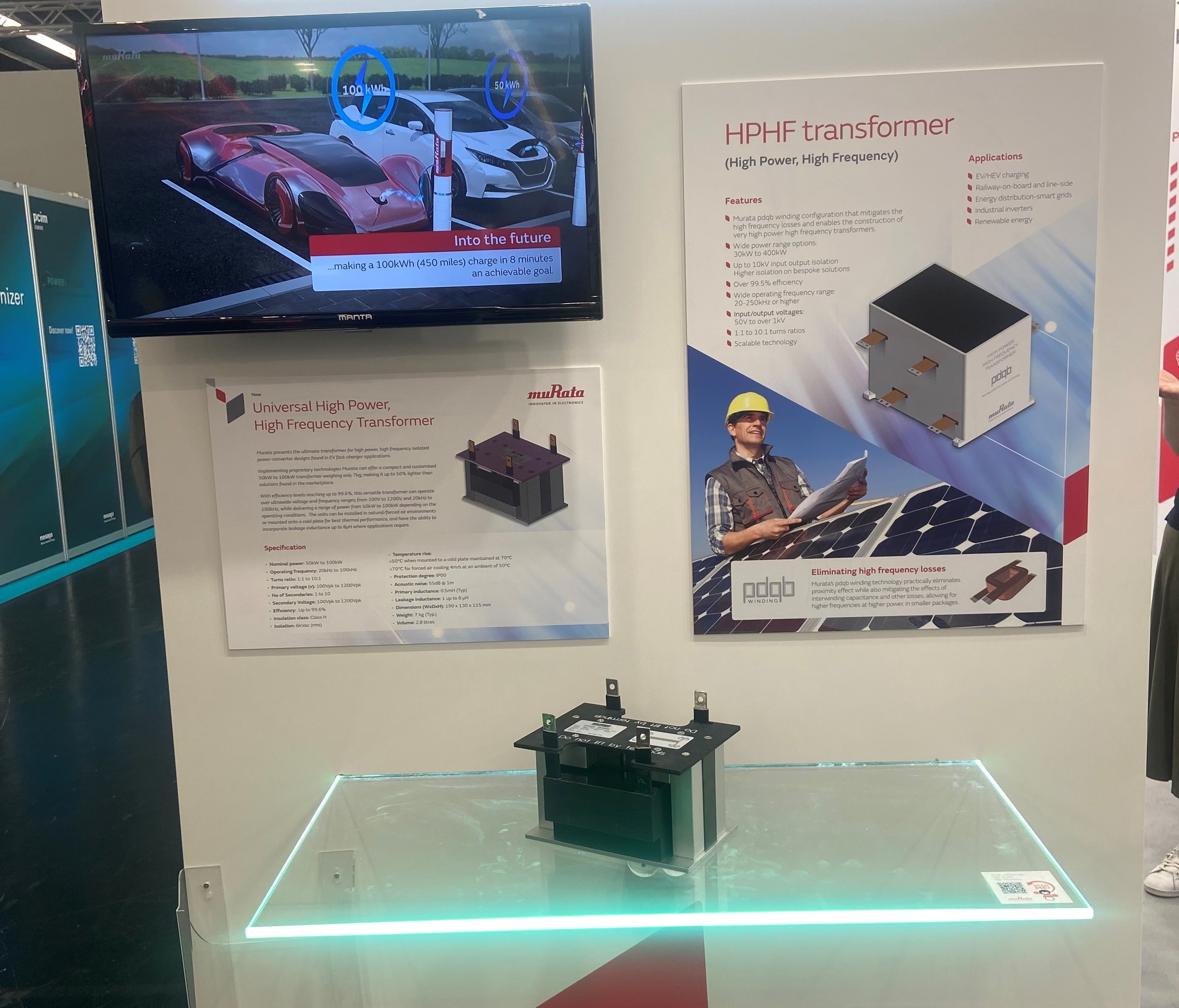PCIM Europe 2022 review
Although GaN and SiC technology and products dominated the power industry show which returned to Nuremberg in May, it was not to the exclusion of all other power technology. The industry has clearly been active even during lockdown and jumped at the chance to show real-life people the progress made.
Innoscience was staking its claim as GaN-on-Si market leader, with data showing production of 10,000 wafers per month and a mission statement to increase that to 70,000 by 2030.
The company was demonstrating a 65W active clamp flyback reference design (30W/inch3 power density) using its INN650D240A 650V GaN-on-Si enhancement-mode power transistor with Silanna Semiconductor's SZ1131 integrated active clamp flyback (ACF) controller. The design achieves >94% efficiency at 230V AC, with a no-load power consumption of less than 25mW.
At PCIM Europe, the company also announced a worldwide distribution agreement with WPG Holdings, for its high and low voltage normally-off (enhancement mode) GaN HEMTs.
Innoscience produces both high (650V) and low (30V) eight-inch GaN wafers at its two AEC-qualified fabs in China. The company was founded in 2015 with investment from Arm, Chinese battery company, CATL, and the Korean memory manufacturer, Sk Hynix.
Championing GaN is a familiar narrative at Efficient Power Conversion (EPC) and the company did not disappoint, with a display of lidar systems, an e-scooter and motor drives. The company has been producing GaN discretes for over 10 years which are used in vehicle lidar system and LED high intensity headlamps to maintain luminescence without risk of interference, explained CEO, Alex Lidow.
The company announced a 1.25kW GaN FET which will be in full production at the end of this year. This follows the introduction of the 1kW EPC9149 which is currently in production. “We expect to double the power of GaN devices with Gen 6 by the end of the year,” confirmed Lidow.
GaN Systems was also using its stand to show the variety of markets using GaN. There was low wireless charging consumer examples, operating at 50 to 300W, industrial wireless charging (300W to 1kW) and automotive examples where GaN devices of around 50W are used in the centre console. My guide was Jim Witham, CEO of GaN Systems. He highlighted some of the consumer examples, including the Yanktech wireless automotive console, where GaN and Airfuel Alliance wireless charging are making wireless charging convenient and effortless. “Unlike Qi, which requires precise alignment, the Airfuel technology operates over long distances - up to 200mm and wide angles,” explained Witham.

The Cell Alpha wireless speaker by Syng
The company’s GaN power transistors range from 100 to 650V. Another consumer application exploits the fast switching of GaN in an amplifier for audio. On display was the Syng speaker which uses a GaN-based power supply to eliminate active cooling and the need for heatsinks in the distinctive Syng Cell Alpha wireless speaker, designed with two woofers, a three-element, two-way beamforming array and three built-in microphones for automatic room equalisation. “I have a tin ear,” admitted Witham, “but the quality is so apparent. You can really hear the directional location of the music”. It is a more faithful reproduction of the audio signal because of GaN’s fast switching, he continued, adding that GaN also allows a size reduction to accommodate a power supply and amplifier in the speaker.
GaN is also replacing silicon in power supplies to meet demand for increased efficiency with less cooling in data servers, said Witham. He highlighted the 2.7kW power supply for servers by SoluM which uses the company’s GaN technology to deliver 82W/in3 density and 96% efficiency, saving around 20% of data centre energy.
SiC updates
The other story on everyone’s lips is SiC. Rohm Semiconductor used the event as a platform to update the power industry watchers on its SiC production. Having introduced its 1200V SiC MOSFETs in 2020, the company expects demand to continue to grow and will expand production capacities to meet this demand. The company announced the completion of a new building at its Chikugo, Japan site. Initially six-inch wafers will be produced, before switching to eight-inch production using the same equipment, said Kazuhide Ino, managing executive officer and chief strategy officer, Rohm.
There are also plans to grow capacity at Its SiCrystal production site which is located in Nuremberg, Germany. “SiCrystal’s intermediate goal is to . . . . [produce] several 100,000 substrates a year, said SiCrystal CEO, Dr Robert Eckstein. Rohm’s president and CEO, Isao Matsumoto said he expects company-wide production to increase by a factor or six compared to 2021.
Rohm accounts for approximately 14% market share of SiC devices and the company expects this to increase to 30% by 2025.
At onsemi, the company had a lively stand with an automotive focus, including a race car. A wall mounted EV charger however, was the company’s illustration of the use of SiC. It uses its latest generation M3 SiC MOSFET to increase performance with less switching losses, increased efficiencies and using a smaller die than the previous generation, explained Didier Balocco, onsemi’s business marketing engineering.
The company also announced that it offered what is believed to be the SiC MOSFET in a TO-leadless (TOLL) package. According to onsemi, the switch saves 30% of PCB area compared to a D2PAK and occupies 60% less volume.
In addition to SiC announcements by Infineon Technologies which introduced the first of its true 2kV SiC MOSFETs, UnitedSiC announced its fourth generation of SiC devices, targeting 800V architectures, primarily in automotive design (DC/DC converters for auxiliary vehicle systems and on-board chargers).

The UnitedSiC stand also highlighted the company name change to Qorvo
Power Integrations has selected the Infineon EconoDual module for its Scale EV family of gate driver boards for high power automotive and traction inverters for EV, hybrid and fuel cell vehicles (including buses and lorries), construction and agricultural equipment. The drivers have two reinforced gate drive channels, power supplies and monitoring telemetry. They are automotive qualified and ASIL B certified. The initial release is the 2SP0215F2Q0C, designed for the EconoDUAL 900A 1200V IGBT half-bridge module.
Advantages are reduced development time and time to market, said Peter Vaugh, Power Integrations’ director of automotive business development. Customers can used PI’s ASICs and integration design to remove half of the components typically need for a gate driver, he said. This frees up more space to accommodate reinforced isolation at the centre of the design. The gate driver board will be available for production release in Q4 2022, confirmed Vaughan.
STMicroelectronics showed its broad range of market interests with motor drives for the industrial market as well as a bi-directional power module for an EV supply equipment using its SiC MOSFET technology in an SMD discrete package, H2PAK-7, with a dedicated Kelvin source pin to provide up to 25kW continuous output in both battery charge and discharge mode (pictured).
 A bi-directional power module for an EV supply equipment uses ST's SiC MOSFET technology
A bi-directional power module for an EV supply equipment uses ST's SiC MOSFET technology
The company also announced that the latest use of the company’s MDmesh technology with an additional platinum diffusion process will be available at the end of 2022. The N-channel, super-junction, multi-drain silicon power MOSFETs, the 650V STP65N045M9 and the 600V STP60N043DM9 are intended for switch mode power supplies in data centre servers, 5G infrastructure equipment and consumer products like flat panel TVs.
More industrial products were highlighted by Murata and the HPHF transformers based on its patented pdqb winding technology – the name is the shapes the coils make when viewed from above. The technology allows high frequency transformers of 400kW and above to be constructed in compact form factors and to operate at frequencies up to 50kHz.
According to Murata’s global product manager for magnetics, Andrea Polti, the technology reduces the effects of high frequency losses for 99.6% efficiency. Other features are a controllable leakage inductance and a low interwinding capacitance.
 Murata's HPHF transformers are based on its patented pdqb winding technology
Murata's HPHF transformers are based on its patented pdqb winding technology
The transformers are suitable for use in EV/HEV fast charging equipment, trackside railway equipment, renewable energy and smart grid energy distribution as well as medical (x-ray and MRI) equipment.
Another industrial application also aiming for a smaller form factor was addressed by Danisense with the introduction of the DT series of fluxgate technology current transducers for isolated DC and AC current measurement up to 200A rms. Loic Moreau, EMEA sales and marketing director for Danisense, said the size of this series is half that of the previous generation, with 60% reduction in volume. The reduction adds flexibility to in-car testing, he said, as the smaller component can be sited in more places. The DT series has a large frequency bandwidth of up to 2MHz and a primary current of ranging from 50A up to 200A, suitable for power supplies in laboratories, accelerators and medical equipment where size and weight for portable equipment is always a design consideration. The latest transducer has an industry standard DSUB nine-pin connection, a green diode for normal operation indication and a large, 20.7mm, aperture for cables and bus bars.
These were some of the highlights from stand visits but the general ambience of PCIM Europe 2022 was encapsulated in a sign above the entrance which simply said “Welcome back”. Exhibitors and visitors alike were pleased to have the chance to see contacts again and make new ones. Most exhibitors reported a high quality of visitors – no tyre kickers, as the American phrase puts it. Everyone was there to learn something and to discuss business as the world cautiously emerges from the darkest days of a global pandemic. Messe Nuremberg reported a total of 11,300 visitors to the three day exhibition and conference and over 700 conference attendees. Evidently some exhibitors decided not to attend at short notice judging by some of the open space on the exhibition floor but the job notice board was filled with vacancies which indicates a promise that the industry is looking forward with optimism.
PCIM is also available online. Virtual exhibition stands, forum recordings and conference presentations are available from 18 May until 30 June 2022.


